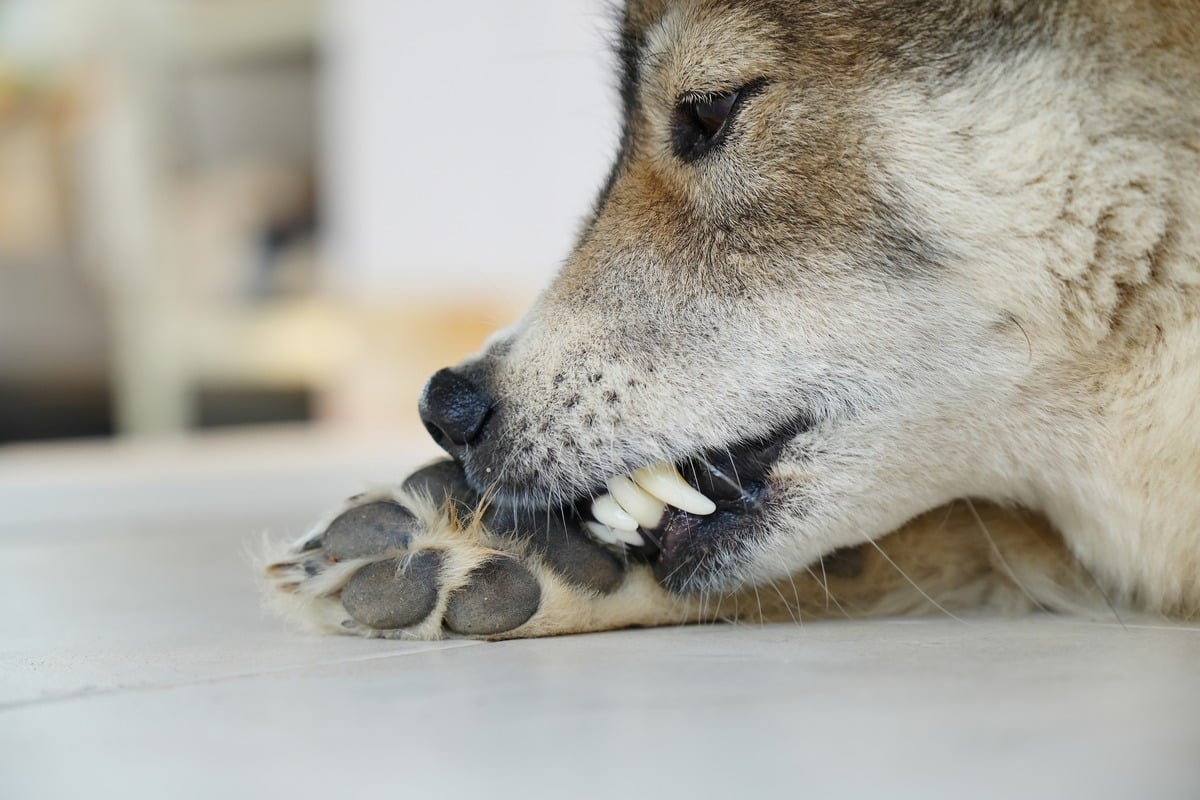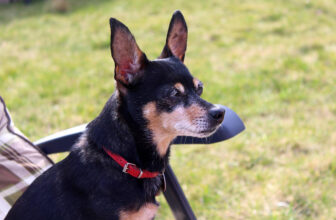
Check out our latest products
Shutterstock
Not all odd dog behaviors are just quirks; many are silent signals that something isn’t quite right. Whether it’s sudden pacing, paw chewing, or staring into space, these subtle actions can point to pain, anxiety, or hidden health concerns. Dogs can’t use words, so they rely on these small changes to let us know they need help. When we recognize these early signs for what they truly are, we’re better able to respond with love, care, and support that keeps our furry companions happy and safe.
Excessive Pacing

Shutterstock
When a dog suddenly starts pacing back and forth for long periods, they may be uncomfortable or anxious. This non-stop movement can be a symptom of pain, perhaps in their joints or belly, or stress over changes in the environment or routine. It’s not restlessness; it’s communication. Ignoring it could allow underlying issues to worsen, so checking for other signs and consulting a vet is wise. Addressing the root cause can bring calm back.
Glass Staring

Shutterstock
If your dog fixates on a blank mirror or wall, it may be more alarming than funny. Obsessive staring can signal cognitive decline, seizures, or neurological problems. What seems like daydreaming could be a silent cry for help from their brain. Keeping a log of when it happens and how long it lasts can help your vet assess the cause. Early detection means better treatment options.
Paw Chewing or Licking

Shutterstock
Constant chewing or licking of paws beyond grooming points to discomfort or stress. It could be allergies causing itchy skin, an ingrown nail, or anxiety with no clear source. When this turns into a daily habit, it’s an alert flag. A vet check can reveal allergies, infections, or behavioral triggers. Once addressed, soothing products or behavioral tools can help them heal.
Loss of Appetite

Shutterstock
Even playful pups can stop eating when something’s off. Loss of appetite can indicate dental pain, digestive upset, fever, or emotional distress. What looks like picky behavior could be an early warning sign. Monitoring weight and mealtime patterns, then acting quickly, helps prevent serious decline. Attention and vet support can bring back happy mealtimes.
Hiding or Avoidance

Shutterstock
When a dog who used to greet you now disappears under furniture or avoids family areas, they might be hurt or anxious. Hiding often reflects fear, pain, or sudden changes like a move or loud noise. It’s not shyness, it’s a warning. Gently encouraging them out and offering comfort while exploring reasons is key. Don’t assume they’re “just moody”; investigate.
Excessive Yawning

Shutterstock
Yawning in dogs isn’t always sleepiness; it can be a stress signal. When it happens repeatedly in unsettling situations, it may indicate anxiety or discomfort. These silent yawns may be calming signals they’re trying to offer themselves. Observing when and why they yawn helps track triggers. Calming routines and vet exploration of anxiety or pain can provide relief.
Tail Tucking

Shutterstock
Tucking the tail tight under the body is more than a posture; it’s fear, pain, or discomfort in disguise. It can happen due to injury (like spinal issues), stress, or social fear. Unlike occasional tucking, persistent positioning signals distress. Gentle observation and medical evaluation can help identify the cause. Tail attention can help guide you toward comfort.
Repetitive Barking or Whining

Shutterstock
Dogs may vocalize repeatedly when trying to communicate pain, loneliness, or confusion. If the barking or whining doesn’t match any obvious need, no doorbell, no hunger, it could point to distress. It may be pain flares, digestive upset, or anxiety reaching a breaking point. Monitoring the context, time, triggers, and intensity gives insight. Acting on their voice with attention and vet understanding helps ease suffering.
Circling

Shutterstock
Repeated spinning in place is rarely about play; it can mean ear infections, vestibular disease, or brain issues. Dizziness or discomfort may push them to circle to find relief. If circling is frequent or intense, it’s a neurological warning sign. Timing and intensity logs support medical evaluation. Early vet visits may prevent lasting effects.
Freezing in Place

Shutterstock
Sudden immobility, staring blankly, and refusing to move may be a seizure event, extreme fear, or a neurological issue. It’s not stubbornness, it’s distress. Recording duration and patterns helps veterinary diagnosis. With support, many causes are treatable. Awareness can prevent worse medical episodes.
Reverse Sneezing

Shutterstock
Reverse sneezing, sudden snorting, and head extension may look silly, but can indicate nasal irritation, allergies, or foreign objects. Frequent episodes in quiet moments often indicate nasal discomfort. A vet exam can differentiate benign reverse sneezing from chronic issues. Treating irritants or allergies soothes their breathing and restores ease.
Repetitive Licking of Surfaces

Shutterstock
When a dog constantly licks floors, walls, or other surfaces, it could signal nausea, stomach trouble, or obsessive-compulsive behavior. Their body is trying to communicate discomfort. Left unchecked, it can lead to digestive issues or frustration. Tracking when it happens and a vet assessment helps guide changes. It restores their ease of mind.
Over-Grooming

Shutterstock
Over-grooming, licking fur raw, or chewing fur off signals stress, skin irritation, or even parasites. This isn’t vanity; it’s a coping behavior that may cause painful sores or infections. Identifying the trigger, such as flea exposure, anxiety, or allergies, is critical. Once addressed, they can relearn calm rather than compulsive comfort-seeking.
The “Help Me, Paw-lease!” Club

Shutterstock
These unusual habits aren’t just odd, they’re a quiet call for help. Paying close attention, recognizing patterns, and responding with care shows true love. Even small shifts in behavior deserve a second look if they seem out of place. When we respond with empathy and quick action, we protect their health and well-being. These subtle signals remind us that listening without words is part of being a devoted dog parent. Your attention today can make all the difference for their comfort and happiness tomorrow.







![[5G & 2.4G] 2K Indoor Security Camera for Home Security, AI Voice Change for 2-Way Talk, Motion Detection, Night Vision, 24/7 SD Recording/Cloud Storage, WiFi Home Camera, Pet Cam with Phone App](https://i3.wp.com/m.media-amazon.com/images/I/61I2U+sTT3L._AC_SL1500_.jpg?w=300&resize=300,300&ssl=1)






